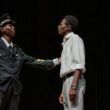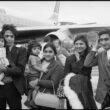
I attended the Highway Secondary School in Nairobi, which was established for Asian boys in 1962. At that time, the bulk of the students, at ninety per cent, were of Asian origin, while the rest were African. By the time I joined, in late 1980s, the demographics had been reversed almost at the same ratio, in favour of Africans.
Highway’s sister school was Ngara Girls, also established for Asian girls, on the other side of town, on the neck of Nairobi’s Central Business District. The location of these institutions reflected a residue of the city’s colonial past where residence, employment and even suffrage, among others, were organised according to race.
This was the first time in my schooling life that I was encountering Asian boys at close quarters: Chetan, who wore a Rasta wrist band; Rasantha, an exchange student and a diplomat’s son; Ajay, a quiet boy who always scored A’s in maths.
At graduation time, four years later, only Chetan remained. Rasantha had left with his family to his father’s next posting; Ajay had left for North America, where his family had emigrated.
But the overall decline in the Asians’ student body in Highway between the school’s founding and my arrival, can be perhaps attributed to post-independence Kenya’s new order: Nairobi’s segregated housing had been dismantled with independence in 1963, bringing more Africans to middle-class neighbourhoods of South ‘B’ and South ‘C’, which were previously reserved for Asians only.
The other reason could be that affluent Indians preferred burgeoning private schools in other parts of the city. Or it could be that some had migrated to other parts of the world, as did two of my classmates.
The reason for this autobiographical context is simple: When I set to write my last historical fiction, Dance of the Jakaranda, which pivots the Asian community in Kenya, I used my high school community to springboard my exploration of perceptions of race and identity in contemporary Kenyan society.
The very presence of Asian boys in my classroom was the initial trigger that drew me to their history. The reception to my book was varied. While many indigenous Kenyans were happy with the book, some were aggressive in their quest for answers to the perceived ‘lack of Africans’ in Dance of the Jakaranda. Yet others questioned my legitimacy to write about a community outside of my own.
My response then, as now, is that Asians in East Africa are part of the African collective and their story is as Kenyan as my own story. In fact, their story is my story, for migration has taken me from the Gatundu village where I was born and raised, to the metropoles of the world. I have done that by narrating the nation that was built on rail.
Needless to say, the contact between the peoples of Kenya and the Indian subcontinent preceded the colonial history that started in earnest in 1890s, with the arrival of the British colonisers.
One generous reader, from Trinidad and Tobago, wrote to say he thought I was an Indian, as I had captured the spirit of the community—which mirrored the Indians in his own country.
Researching for the novel took me to the annals of history, which I found confounding. I found Kenya’s history of race relations was replete with omissions—especially when Asians and indigenous Kenyans joined hands to challenge and resist white oppression. I’ll be returning to this element shortly.
First off, as we mark the 50th anniversary of the expulsion of Asians from Uganda, it’d be remiss to restrict our gaze to the limiting prism of Idi Amin’s histrionics, tragic as they were. It’s important to acknowledge that Amin’s rise to the top was facilitated by the Israelis and Brits, according to declassified information.
Uganda’s founding President, Milton Obote, was ousted by Amin on 25 January 1971, as he transited through Bombay (present-day Mumbai). Obote was returning from a Commonwealth Summit in Singapore, where he excoriated Britain’s decision to sells arms to South Africa, then a pariah State, after institutionalising apartheid in 1948.
The British Prime Minister Edward Heath’s response was chilling: ‘Those who are condemning the British policy to sell arms to South Africa, some of them will not go back to their countries,’ Heath is reported to have said in his address. Indeed, Obote flew to Nairobi, to start his exile.
In the Cold War politics of 1970s and 80s, Obote was an easy target for his alleged move to the left. In 1969, he had introduced a Common Man’s Charter to create ‘a new political culture and way of life with the means of production in hands of the people as whole,’ The Guardian observed in its 2005 obituary.
‘Obote became the whipping boy of the western press, a kind of socialist ogre of the emergent independent Africa.’ The article concluded: ‘Obote’s policies did not involve large-scale nationalisation, as was alleged. What he sought was a substantial, but not majority, shareholding in foreign-owned businesses, as was happening in other African countries at that time.’
In the course of my research for Dance of the Jakaranda, I discovered striking parallels between Idi Amin’s 1972 edict expelling Asians from Uganda, and Kenya’s 1968 law that locked Asian businesses out of rural Kenya.
Kenya had instituted its Africanisation programme, which was meant to prop indigenous businesses, which could not compete on the same keel as those of the Asians. Consequently, many traders were forced to sell their businesses cheaply, and leave overnight the place where they had put down roots.
This kind of thinking mirrored the spirit of the so-called Devonshire White Paper of 1923, a colonial treatise that prohibited Asians from owning land in colonial Kenya. At the face of it, the policy emphasized the ‘paramountcy of African rights’. Even whites, the paper claimed, could not own land, but only hold land in trust for Africans. One hundred years on, Kenyans are still waiting for the return of their lands!
What’s even more confounding, which also unfurled around the same time, were the colonial authorities’ efforts to thwart collaboration and cooperation of Indians and Africans. In 1921, trade unionist Harry Thuku formed the Young Kikuyu Association. Through his association with Manilal A Desai, another trade unionist, Thuku changed his outfit to the East African Association, the first nationwide African multi-ethnic movement in colonial Kenya.
Thuku’s outfit had ties with Marcus Garvey’s Universal Negro Improvement Association in black America and the Gandhi Movement—through his alliance with Desai—Ngugi wa Thiong’o writes in his memoir, Dreams in a Time of War.
Thuku’s arrest in March 1922, in which dozens were killed by colonial authorities, was followed by a seven-year detention stint in Kismayu, (in present-day Somalia), Lamu, Witu and Marsabit.
My inspiration for referencing progressive political and labour organising in my fiction, however, sprung from historical figures like Makhan Singh, a gallant trade unionist who supported Kenya’s freedom struggle to the hilt. I was also drawn to Pio Gama Pinto, a politician of Goan origin, who was murdered by State operatives in 1965.
Singh, who was detained in both Punjab and Kenya by colonial authorities, apprenticed as a printer at his father’s firm and quickly took helm at the East African Trade Union Congress (originally the Indian Trade Union) in 1934. He persuaded fellow unionists to drop the racial identification and broaden its membership beyond racial and national strictures to embrace Kenya and East Africa as a whole.
But Singh went beyond mere change of name to foster inclusion and promote multicultural and multilingual diversity. The union published its handouts in Kiswahili, alongside Punjabi, Gujarati and Urdu.
Babu Salim, the fictional protagonist in Dance of the Jakaranda, is inspired by the life of Singh, while Babu’s son, Rajan, is inspired by Pinto.
It’s worth noting that pre-independence publications, from Jomo Kenyatta’s Muiguithania to Gakaara wa Wanjau’s Gikuyu language newspapers, or Thuku’s Tangazo, all rolled off the Indian presses, as Africans were banned from owning presses at that time.
There are many ties that bind Asians of East Africa and indigenous Kenyans. It’s our solemn duty to excavate and re-remember those epochs and explore the possibility for the old allegiances to forge something new in this century.





